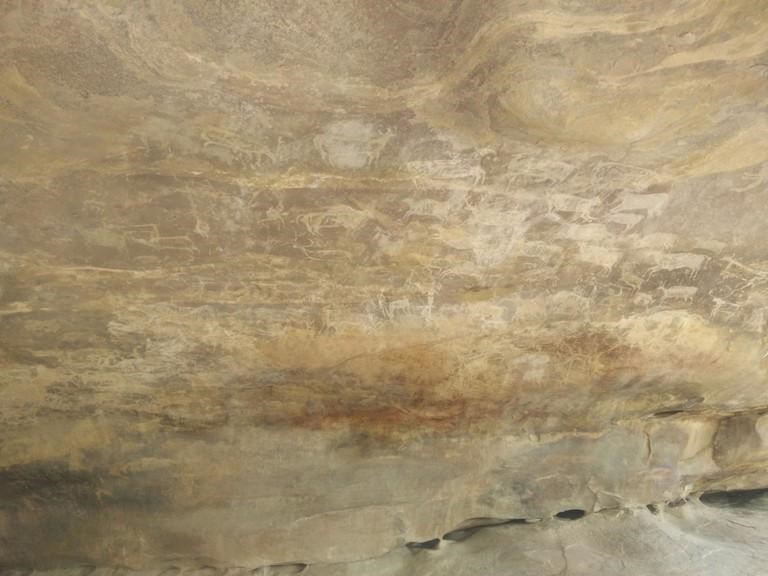Bhimbetka
Bhimbetka is primarily famous for housing a number of prehistoric rock paintings in South Asia. The Rock Shelters found at Bhimbetka show the earliest traces of human existence in India. According to archaeologists, these caves were inhabited over 30,000 years back.

- The Bhimbetka Rock Shelters are a World Heritage Site and, according to the Archaeological Society of India, show signs of the earliest human habitation.
- They also feature rock art which shows the evolution in painting as a form of expression.
- The dawn of mankind continues to be one of the most fascinating periods of our history. We are ready to embark on any vehicle that takes us back in time and provides insights into the lives and struggles of early man.
- Prehistory, the period before recorded history was documented following the invention of writing systems, is divided into Stone, Bronze and Iron Age. These names are based on the technologies that humans used during these times.
- A common answer when exploring the earliest traces of prehistory in India is the Indus Valley civilization of Harappa and Mohenjo-daro.
- The Indus Valley Civilization, dating back 5000 years, is one of the first recorded civilizations: a society which has economic, political, social and cultural interactions.
- Yet the oldest human settlement in India can in fact be dated to as far back as 1,00,000 years, with rock paintings and art which date back to 30,000 years ago.
- Some of the oldest paintings show human forms and animals in geometrical shapes, similar to how children these days begin drawing through geometrical forms.
- The art on these rock shelters show animals like elephants, horses, deer, peacocks and bison: a rock shelter named Zoo Rock is one of the main attractions here. You can also see art depicting humans on horses, with weapons like arrows and spades.

- As the ability to paint evolved, so did the sophistication of images.
- Some are superimposed over others, showcasing battle scenes, soldiers’ march, and celebrations with dance and music. These rock drawings trigger the imagination, acting like a time machine across the memory lane of human evolution.
- UNESCO declared the rock formations a World Heritage Site in 2003.
Trips
& tours
Choose M.P Holidays®
- Approved by “The Ministry of Tourism” (Approval No: 2203270HE874)
- “The Official No.1 Channel Partner” of M.P Tourism (Registration No: MP-TOUR-20221/131888)
- We are Awarded “The Best Travel Agent” by M.P. Government for the three consecutive years. (2016, 2017 and 2018)
- Having offices at
- Surat
- Indore
- Ahmedabad
- Pachmarhi
- Nagpur
- Kanha
- Own resort at Madhya Pradesh











